Saturday links, plus what you need to know about India’s baffling new vaccine policy
India's devastating second wave.
Welcome to The Political Fix by Rohan Venkataramakrishnan, a newsletter on Indian politics and policy. To get it in your inbox every week, sign up here.
India’s second Covid-19 wave is a huge story.
Help our small team cover the big issues.
Contribute to the Scroll Reporting Fund or, if you’re not in India, subscribe to Scroll+.
Things have only gotten worse since our Monday newsletter, as India’s absolutely massive second wave – or indeed, wall as some people are calling it because of how vertical the line on the graph is – continues to ravage parts of India, particularly in the North and West.
This BBC report, which may be disturbing to some, offers a glimpse of what it’s like in Delhi right now.

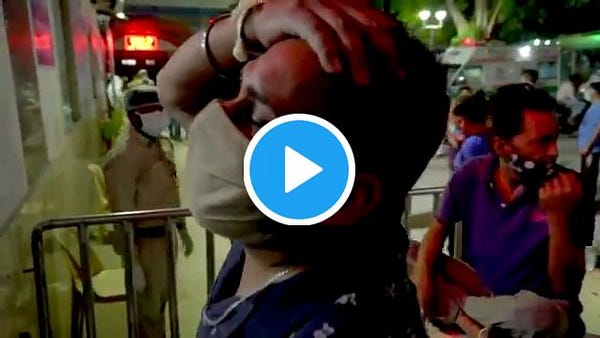
Or, as Rukmini S put it, “since the beginning of the pandemic, [Prime Minister Narendra] Modi has attempted to frame the crisis as a collective experience that Indians are in together. But over the last weeks, it has been abundantly clear to most Indians that they are truly on their own.

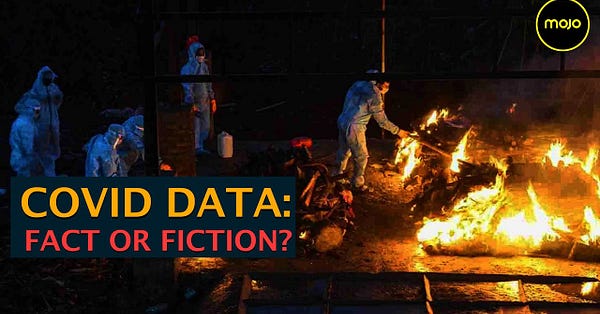
We don’t have a Q&A for you this weekend, or even broader links – though those are piling up and we might send a whole stack next week – but a few pieces by the Scroll.in team on the current crisis and my explainer on the new vaccine strategy below:
With patients attempting to secure their own oxygen and hospitals running out, this is the biggest, most distressing story of the week: How grave is India’s oxygen emergency? Worse than the government admits finds Arunabh Saikia
Last ditch effort by Madhya Pradesh to install oxygen plants shows even states failed to prepare for pandemic, reports Vijayta Lalwani
For those in cities around the country or indeed around the world, who think that past waves should make it less likely that they’ll be hit hard again, Murad Banaji ask points out that Delhi’s absolutely devastating numbers are part of its fourth Covid-19 surge, after most expected a significant portion of the population to already be infected.
‘Unilateral decision’: Sruthisagar Yamunan reports on how states are unhappy with Narendra Modi’s decision to pass the buck on vaccine costs
India’s plan to fragment the vaccine market across the states is mind-bogglingly bad economics write Ashish Kulkarni & Murali Neelakantan
India’s triple mutant Covid variant is sparking global concern. Why do we know so little about it? asks Arunabh Saikia
Why is India learning details of vaccination strategy from Adar Poonawalla and not the Centre, I ask.
In Delhi, glowering photographs of a mass cremation mark a night of grief.
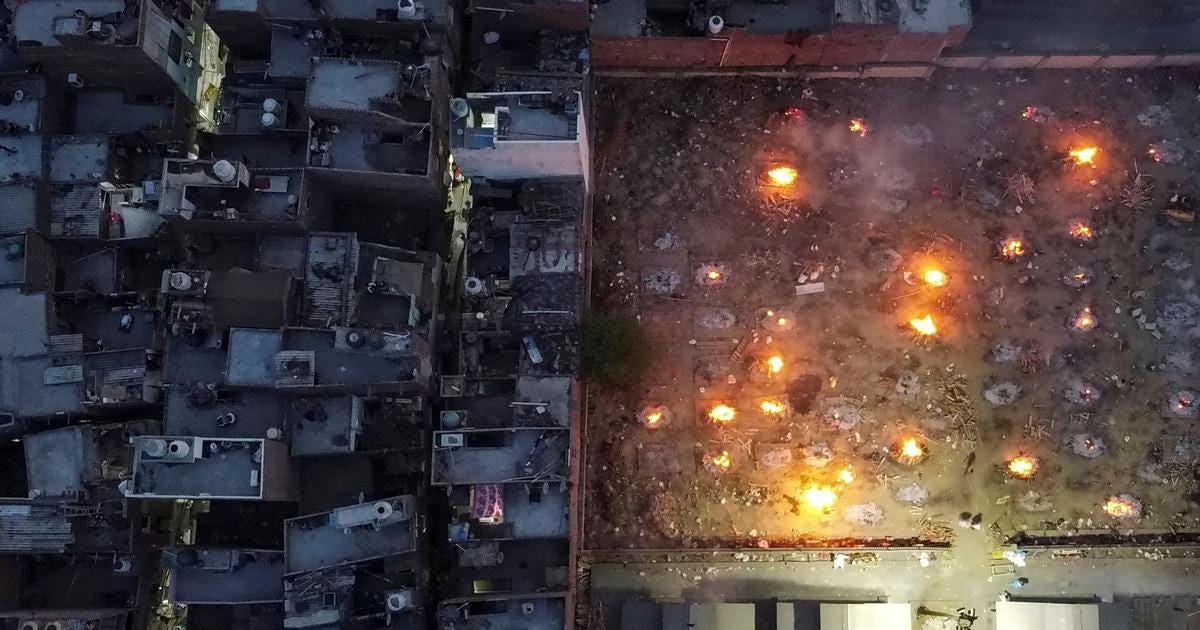
What you need to know about India’s baffling new vaccine policy
As stories of the brutal second wave of Covid-19 began emerging from all over the country last week, these were two of the many questions that emerged: Where was Prime Minister Narendra Modi and his government? And what were the calculations behind his government’s massive vaccination campaign that seemed to be running out of steam rather than picking up pace?
Responses to both questions emerged this week, even if the replies were not entirely satisfactory. On Monday, the government announced a number of changes to India’s Covid-19 vaccination strategy, including making every adult eligible to get a shot starting May 1.
Then, a day later, Modi took a break from campaigning for the West Bengal Assembly elections to deliver a national address announcing the new vaccine rules, and added that “states must tell migrant workers they will be vaccinated in next few days and their job will remain with them”.
The change in eligibility brought relief. Vaccines will now be open to Indians of working age, the vast majority of whom cannot rely on a work from home arrangement.
But it also seemed a bit baffling. Just as the country appeared to be facing shortages and an inability to scale up its vaccination effort, the government was adding another 600 million people to the list. Eligibility would open up in two weeks – with no expectation of fresh new vaccine supplies by then.
What explains the change then? The government has not explained, beyond boilerplate language saying it would make “pricing, procurement, eligibility and administration of vaccines open and flexible, allowing all stakeholders the flexibility to customise to local needs and dynamics”.
But the fine print, as well as comments by the Chief Executive Officer of the world’s largest vaccine manufacturer, Serum Institute of India’s Adar Poonawalla, give us a glimpse behind the government’s thinking.
Here is what we know.
What are the changes for citizens?
All adults over the age of 18 will be eligible for vaccines, starting May 1.
Those eligible earlier – adults over the age of 45, health care workers and frontline workers – can continue to get the vaccines for free from government vaccination centres.
Some states – Uttar Pradesh, Assam, Madhya Pradesh and Kerala – have announced that they will anyway give vaccines for free to all adults at state vaccination centres. This will likely put pressure on other states to do the same, but all may not choose to or be able to do so.
Adults in the 18-45 band will also be able to get the vaccines from private hospitals, for a price.
For those in the 18-45 bracket, do not expect to be vaccinated in the first week of May. India was dealing with shortages for the 45+ bracket even before the new policy was announced, and new supplies aren’t expected until June or even beyond.
What are the supply-side changes?
Earlier, 100% of vaccines were being procured by the Centre and allocated to the states, based on demand and an unarticulated formula.
Under the new rules, the Centre will automatically receive only 50% of vaccines produced by manufacturers. It will allocate these to the states under a new set of criteria, including number of active Covid-19 cases, “performance (speed of administration)” and wastage, which will count negatively. These vaccines are meant for the vulnerable population: those over 45, health care workers and frontline workers.
The remaining 50% can be acquired by the states directly or by private hospitals and industrial establishments, at a price. These can be given to any adult over the age of 18.
Significantly, this means vaccinations for the entire 18-45 band – 600 million people – will either have to be paid for by states or by the citizens themselves. The Centre will not pay.
Manufacturers will have to declare a price for this block of vaccines, and private hospitals providing vaccines will also have to announce rates.
Imported, ready-to-use vaccines can also be deployed by states or private hospitals.
The Centre has advanced Rs 3,000 crore to Serum Institute of India, which manufactures Covishield, and Rs 1,567 crore to Covaxin manufacturer, Bharat Biotech, against vaccine supplies until July.
Does this mean there are enough vaccines for everyone?
Immediately? The answer is an emphatic no. India barely had sufficient vaccines for the 3 million or so adminstered per day to the vulnerable, 45+ band that was eligible before the new announcement.
While the Centre suddenly opened the country up to new vaccines last week, just days after senior ministers lampooned the Opposition for demanding it, no large-scale supplies are expected over the next two weeks or indeed, next two months.
Sputnik V, the Russian vaccine whose developers have tied up with five Indian manufacturers, may eventually offer as many as 850 million doses. But most expect the bulk of this – as well as supplies from a number of other manufacturers – to come in the second half of the year.
“Assuming the ramped up capacity by June, three vaccine firms – Serum Institute (100 m doses per month of Covishield), Bharat Biotech (10 m per month of Covaxin), and Dr Reddy’s (around 4 m doses per month of Sputnik V) will together be able to throw up only 115 million jabs per month, just about 10% of the total demand,” reported the Times of India.
This would not even cover the 400 million people in the vulnerable band that the government had hoped to cover by August, let alone the much larger target group now eligible.
Why open up to all then?
Because the states asked for this to be allowed, after the Centre repeatedly claimed there were “no shortages” of vaccines. A number of states, several Opposition politicians and industry bodies had written to the Centre demanding that they be permitted to vaccinate all adults, since this would cover all people of working age.
The Centre, in its press release announcing the changes, also claimed that it had selected May 1 because “a good amount of coverage of vulnerable groups is expected by 30th April”. It is unclear what percentage or absolute figure “a good amount” refers to.
Since the Centre never had a clear blueprint for how the vaccination campaign would go, it is hard to tell whether this was always part of the plan – or a decision made in the moment. What is evident is that the new policy allows the Centre to claim that it has done as the states have asked, while allowing it to brush aside concerns of shortages or costs and shift all of those onto the states – even though it is responsible for not securing more stocks.
Why are states unhappy?
Because the Centre appears to have given up on the responsibility of vaccinating people in the 18-45 band and, as is now standard, made this decision without consulting at the federal level.
Several chief ministers have written to the Centre or publicly complained that the new rules, which would require them to pay for vaccines for those in the 18-45 range, will put a huge amount of stress on state budgets, even as they are already reeling under the impact of the pandemic.
Moreover, the decision effectively fragments the vaccine market, leaving 30 states and Union territories and innumerable private providers to do deals with a very small set of manufacturers for 50% of the total vaccines produced.
As of now, there appear to be no safeguards in terms of equity – ensuring that the vaccines are distributed in a fair manner – or indeed, in terms of capacity, since not all states or private entities will be able to negotiate with the manufacturers on an equal footing.
“No other country is doing this [open market sale] as yet, because all these vaccines are still under restricted or emergency use permissions and have not yet been fully licensed in their countries of origin, except, perhaps, in Russia,” vaccine expert and Christian Medical College professor Dr Gagandeep Kang told the Indian Express.
This is complicated because the end goal is not a free market for vaccines, but protecting lives by vaccinating as many people as possible in the shortest possible time.


Wasn’t this the decentralisation that states asked for?
States had primarly asked for freedom in vaccination strategies, including in being allowed to vaccinate the working-age population. While some, like West Bengal Chief Minister Mamata Banerjee, had indeed asked to be allowed to purchase vaccines with state funds, most were expecting the Centre to use the amount it budgeted for the inoculation campaign – which it has not decentralised – to pay for them.
Moreover, no one was expecting the Centre to put the entire burden of vaccinating the 18-45 band on the states or to private providers. As mentioned above, each of the states and Union territories, as well as individual private providers, will now have to bargain separately with a limited set of manufacturers.
There may not be a bidding war, since manufacturers were asked to pre-declare prices. Some critics, though, have said this approach means that the Centre gave away its power to potentially negotiate a lower price. But there are a number of other considerations beyond cost. How will manufacturers decide which states or private operators to supply to first, when production is limited?
If this was always part of the plan, why couldn’t it have been communicated to the states, so that they could have built capacity and begun to negotiate with the manufacturers beginning last year? If it wasn’t, what made the government suddenly decide to fragment the market – particularly when it was aware of the constraints and likely shortages?
This policy may still work out for states like Maharashtra, in which the Serum Institute of India is based and which may have the capacity to strike the best deals with the manufacturers,. But few believe it will ensure equitable and speedy dispersal of vaccines.
How much will vaccines cost?
So far, only Serum Institute appears to have officially declared its prices, based on the government’s directive. As per its announcement, Covishield – which accounts for nine out of 10 vaccines India has administered so far – will be priced at Rs 400 per dose for state government procurement, and Rs 600 per dose for private hospitals.
This is much higher than the Rs 157.50 or so per dose that the Centre had negotiated for the first 200 million doses it ordered from the company, which it will continue to receive until July.
“Given the nature of the country’s federal structure, a differential pricing for a public good is unjustifiable,” one state’s chief secretary told the Indian Express. “That, too, for a vaccine being produced under EUA (Emergency Use Authorisation). What about the spirit of cooperative federalism?”
Serum Institute CEO Adar Poonawalla had admitted that, even at Rs 157.50, his company was indeed making profits, but that the new rate would allow his company to make “super profits” that it could reinvest.
Bharat Biotech, which manufacturers Covaxin – jointly developed with the Indian Council for Medical Research and the National Institute of Virology – has not announced its prices yet. But its chairperson and managing director, Krishna Ella, has announced that he would like to set the “maximum price” to cover all costs.
GV Prasad, Managing Director of Dr Reddy’s, which is importing and manufacturing Sputnik V, has said he expects the upper ceiling of the vaccine’s pricing to be set at around Rs 750.
These rates may not be the final cost at private hospitals, which may tack on their own logistical costs before announcing pricing for potential customers.
Anything more than Rs 600 per vaccine – meaning Rs 1,200 for full vaccination course, assuming a third booster shot is not needed – will be extremely prohibitive for a huge swathe of the Indian population.
Why is India paying so much?
Even at Rs 400, the cost that state governments will pay to provide “super profits” to the Serum Institute, India is paying far above the rate that most countries the world over are spending on the Aztra Zeneca vaccine. Moreover, this is even as the company receives even more orders, which ought to give it more economies of scale. So why the higher pricing?


According to Poonawalla, the answer lies in how the Centre has been negotiating vaccine supplies.
As many have reported, India chose not to give any monetary support to manufacturers in 2020 – presumably concerned about vaccines turning out to not be successful or simply being paralysed by having to make a decision. Instead, India has mostly been making its vaccine policy on the fly, rather than stockpiling them as many other countries did.
Poonawalla claimed that the prices negotiated by those countries, between $3 to $4, Rs 220 to Rs 300, were special prices negotiated in 2020 when it was still unclear if the vaccines would work, and so effectively allowed both government and company to share the risk.
Since India did not invest at the time, it will now have to pay much more – and the Centre has decided that that burden will fall on the states or the citizens.
As many have pointed out, however, there were a number of other options open to the Centre that it chose not to tap into – including issuing compulsory licences for vaccines it co-developed and using public sector vaccine manufacturers. This raises even more doubts about why India is now paying these prices for vaccines that will need to cover the entire population.
The question that this policy will now have to answer: can an opaque, fragmented public-private vaccination campaign with differential pricing do the job of vaccinating as many Indians as possible in the shortest amount of time?
One answer comes from Ashok Malik, a policy advisor to the Ministry of External Affairs, who tweeted a few days before the decision was announced:



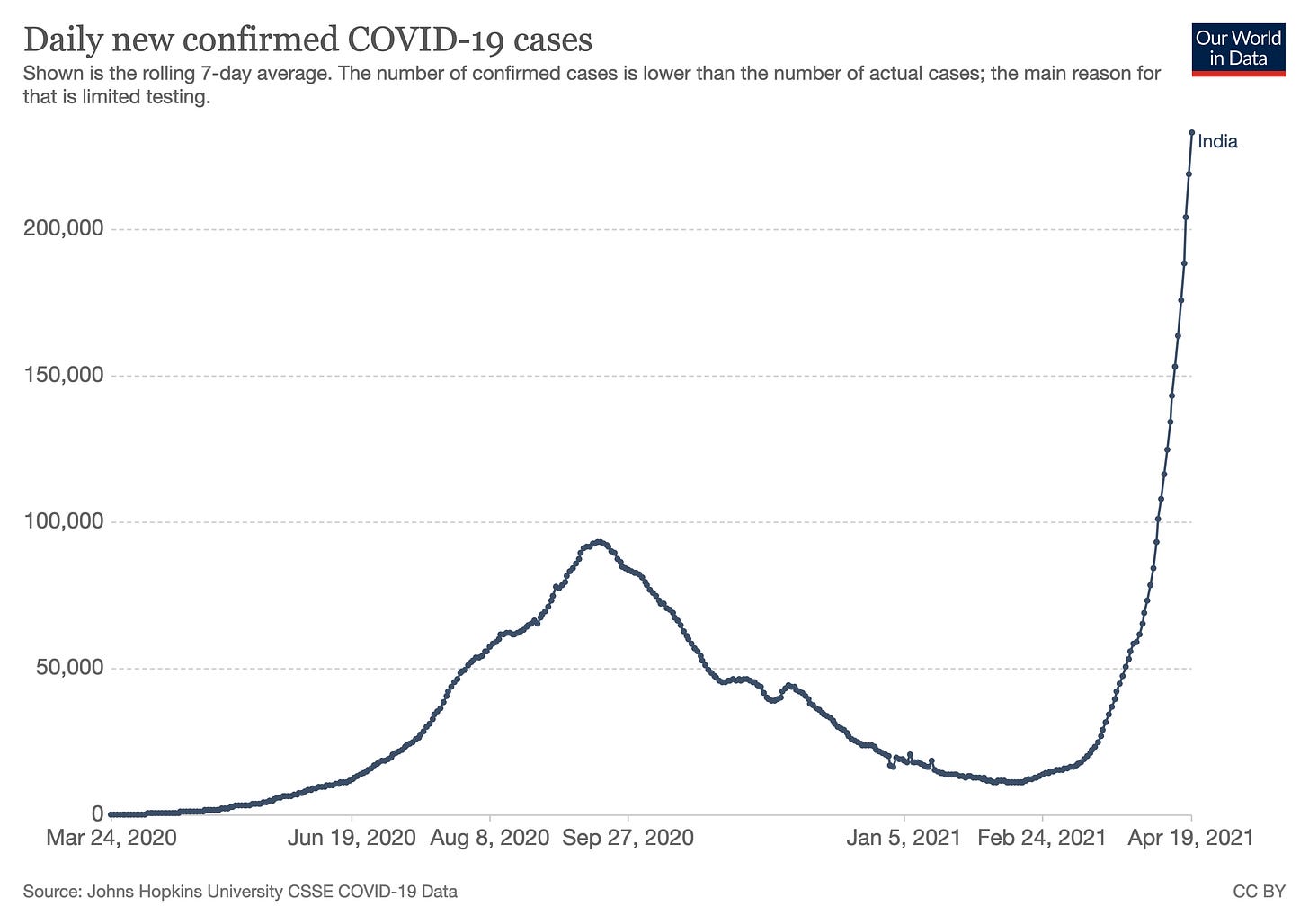
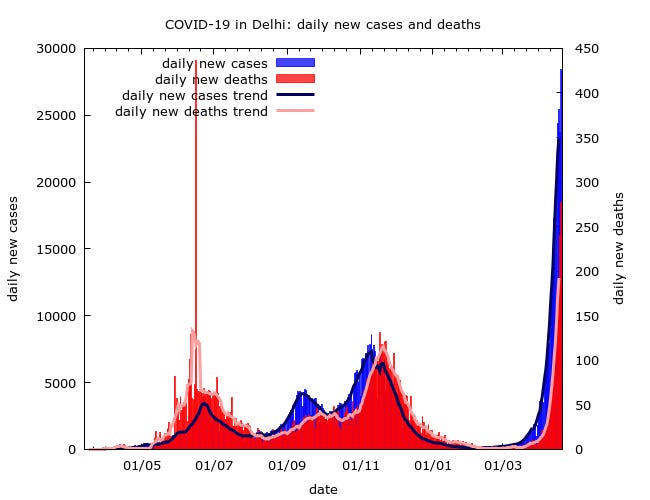



A 'free-er' market response would be much better in vaccinating all citizens. It would lead to mass production and better results. India's vaccination campaign was a dud because of high amount of wastage and no incentives to supply and demand.
SII already had 100 million production capacity, but what they were doing with it? They were making other vaccines because coronavirus vaccine gave them less margins. Only if you provide them with more margins, then only they can move production away from producing other vaccines. They have to pay 50% of price to AZ, so they were actually selling at cost. They were ready to sell at cost, so that they can sell it at profit later on.
Only when there are free markets, can products be delivered efficiently. By the way, I differ with the sentiment that Indians are too poor to afford vaccines, granted BPL has to be given for free, but for those who can afford the vaccine, they could be taxed so that they can make vaccines free for poor people, these techniques can be done to incentivize production and supply.
To protect as many people as possible, we need to vaccinate people through hook or crook. The priority should be to save lives, and not enforce social redistribution of misery.